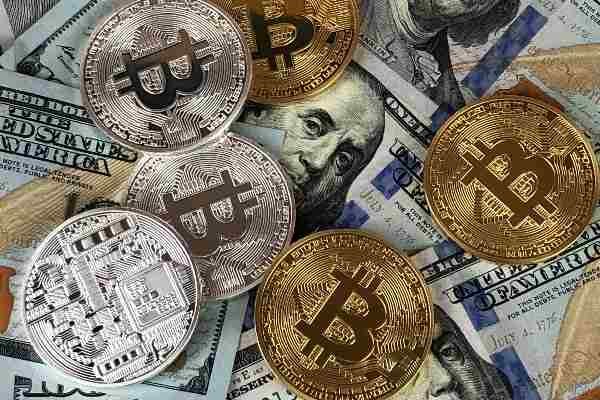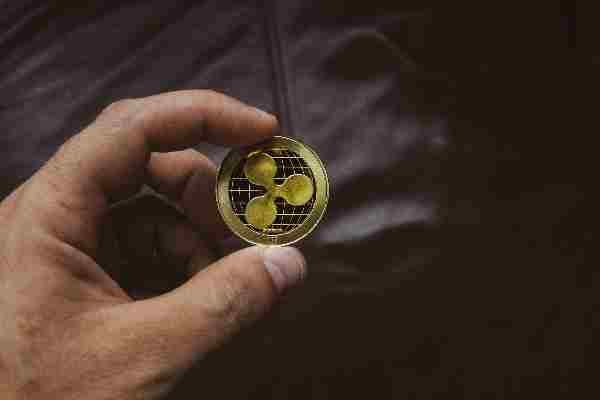Bitcoin (BTC) was the first cryptocurrency to distribute a white paper in 2009 that imagined another type of money. As the thought took off to become the first real-world execution of blockchain technology, Bitcoin found use cases inside the internet and at last made borderless marketplaces.
Bitcoin’s blockchain infrastructure is controlled by a network of free node administrators and miners spread out across the world. The Bitcoin white paper, named “Bitcoin: A Distributed Electronic Cash System,” led to decentralised finance (DeFi) under the guise of giving the power back to individuals, however the technology needed to likewise beat the conventional financial system all around.
This implied being quicker, safer, restricted by amount and boundless by geography, among different abilities of a resource we know today as money.
As business people responded to this call, it brought about the introduction of various sub cryptosystems that would wind up contending to supplant Bitcoin as the lord of crypto. Here enters Ripple’s XRP, a cryptocurrency or altcoin that was enlivened by Bitcoin decided to become a variant focused on working on the conventional financial system.
The Ripple network is fueled by Ripple for settling cross-line payments for enterprises and people. Ripple does this by joining forces with financial institutions, for example, banks to deploy payment corridors in consistency with local jurisdictions.
In this guide, we will be covering the differences between Bitcoin and Ripple. Hence, without wasting any further time, let us hop onto it.
Inception — The Rise Of The Duel
Contents
The founder(s) of Bitcoin decided to stay anonymous behind the alias of Satoshi Nakamoto. And successfully so, the bits of the data and cases gathered over the course of the past ten years have all arrived at an impasse.
The reason behind this move was to lay out a really decentralised Peer-to-Peer (P2P) financial system without any extent of being controlled.
By having no form of establishment, Bitcoin endured all types of regulatory scrutiny and resistance — all while walking its direction into standard reception.
The XRP Ledger (XRPL) was worked on in 2011 by developers on a mission to make a superior version of Bitcoin. The group — David Schwartz, Jed McCaleb and Arthur Britto — imagined a Bitcoin-like system without the reliance on mining operations, with Chris Larsen joining the group as the last piece of the puzzle.
In view of this objective, the ledger originally launched Ripple or XRP as its native token. From that point forward, XRP took off as the go-to cryptocurrency for traditional institutions across the world that are keen on chasing after cross-border remittance initiatives.
Looking past every one of the distinctions in origin, both Bitcoin and XRP are upheld by their local area of crypto devotees that help the separate ecosystems universally.
The two networks are right now driving the endeavours to secure legitimate status for their crypto, however dissimilar to XRP, Bitcoin isn’t supported by any institution like Ripple and its set-up of attorneys.
The battle for Bitcoin’s significance is driven totally by individuals that truly trust in it and the consolation of a huge profit from investment.
Those who support XRP are trying its lawfulness under the conventional umbrella and are vigorously reliant upon its acceptance from banks and traditional financial institutions for it to go standard.
Fork the System:
While Bitcoin was made to take out the banks and governments from the equation by and large, XRP took an alternate strategy to track down a spot inside the current financial landscape.
As it matched Ripple’s inherent goal of further improving cross-border payments and rethinking the traditional banking system, XRP stood apart as a core piece of technology to make this conceivable.
In any case, Ripple is a software organisation that exists free of XRP and not the slightest bit controls or works the cryptocurrency.
Not at all like Bitcoin’s open infrastructure that is run exclusively by the overall population, XRP is based on the privately owned InterLedger Protocol (ILP).
Bitcoin was based on the conviction that a true asset which can grow with time and must be restricted in nature. Subsequently, the supply has been covered to 21 million, in spite of the fact that proceeding with issuance by making changes to the protocol is conceivable.
Powered by the SHA-256 hash function, the Bitcoin ecosystem relies upon miners to confirm transactions and deliver new tokens into the market by acquiring rewards.
Then again, XRP was designed not to be mined and the token’s most extreme supply has been covered at 100 billion, of which 80 billion XRP were gifted to Ripple by the founders.
Notwithstanding, the actual circulation of XRP is subject to the crypto’s use case, and any additional tokens get moved to an escrow account to be recycled at a later stage. This design permits XRP to start more transactions at a quicker and less expensive rate.
Miners, Keepers:
The Bitcoin community is to a great extent reliant upon a network of miners to make the ecosystem possible. In any case, the progress of this technology depends on trusting at least 51% of miners that can offset the bad actors while legitimising transactions.
XRP eliminates this reliance by replacing the miners with validators that are servers assigned to confirm transactions in light of protocol authenticity.
Bitcoin runs on a proof-of-work (PoW) mechanism to tackle the issue of double-spending, which on the off chance that not done, will permit users to fool the system into spending a similar number of Bitcoin across at least two transactions.
All in all, the network is highly subject to the positive goal of no less than 51% of miners to legitimise a transaction on the BTC network.
While the PoW component restricts the speed of transactions, XRP transactions are affirmed and settled quicker by the ledger’s agreement convention i.e., around three to five seconds, instead of Bitcoin’s 500 seconds.
This distinction in the convention permits XRP to process 1,500 transactions consistently while Bitcoin figures out how to settle three transactions in that time.
Mining operations additionally add to energy utilisation as power. Considering long haul supportability, XRP’s conveyed agreement component can approve transactions utilising insignificant amounts of energy and a negligible portion of Bitcoin’s time.
Be that as it may, both crypto ecosystems require a fee to process the transactions, which is intensely reliant upon the mode and amount of transfer.
Price Surge vs. Adoption Rate:
A ton of business visionaries and conventional investors have changed sides after a “Bitcoin billionaire” turned into a thing.
Although the original Bitcoin white paper made no such commitments, BTC remains as the most productive store of value that keeps on drawing in investors.
XRP, going against the norm, took on a job as an extension currency that outflanks government issued money regarding pace and costs.
XRP right now drives the cross-border settlement space, inferable from Ripple’s broad partnerships with conventional banking giants across the globe.
The XRP ecosystem as of now focuses mainly on expanding its adoption rate by serving different use cases within the traditional payments.
The XRPL pioneers at first talented 80 billion XRP to Ripple, out of which 55 billion or 55% of the all out XRP supply have been secured in a series of escrows.
Given the popularity of both Ripple and Bitcoin, the cryptocurrencies can be traded across all major crypto exchanges across the globe and are likewise upheld by most crypto wallets.
While both are cryptocurrencies on the most fundamental level, Bitcoin and XRP appeared to challenge the changed real factors of money and possibly work to reclassify the importance of money in the process.

| Features | Bitcoin | Ripple |
| Ownership | Public | Private |
| Algorithm | Proof of Work | Consensus |
| Block Size | 1 Megabyte | N/A |
| Transaction per Second | 10 | 1,500 |
| Transaction Cost | $0.50/ tx | $0.0002/tx |
| Transaction Speed | 600 seconds | 3-5 seconds |
| Maximum Supply | 21 million | 100 billion |
| Mining Capability | Yes | No |
| Smallest Unit | Satoshi | Drop |
| Energy Consumption | 57.09 billion kWh | 474,000 kWh |
What’s in it for the people?
One major predicament that a crypto investor could think they are confronting is to pick sides between two coins or ventures. At the end of the day, both XRP and Bitcoin worked to perform various assignments and didn’t come under direct rivalry.
Bitcoin leads in accessibility, as the system permits anybody to trade or convey Bitcoin across the world, autonomous of all purviews. XRP is more similar to a specific tool that is intended for settling cross-line transactions with lower costs and faster velocities than conventional government issued money.
As a genuine store of value, Bitcoin’s capacity to be openly traded gives the overall population more command over any man-made guidelines and market forecasts. XRP’s use case is vigorously reliant upon Ripple’s association with banking institutions and has not been focused on price.
As XRP keeps on serving genuine use cases, its significance in the financial world can no longer be disregarded by banks as it could become a piece of a smoothed out way to deal with cross-line settlements.
Joined endeavours from Ripple and the XRP people group are endeavouring to push Ripple’s payments solution toward worldwide reception.
On the opposite side, Bitcoin’s instability has made it a practical choice for speculative investments. While BTC has been accepted as a resource following a very long term heavenly price execution, the specific status of XRP is as yet muddled in many regions of the planet.



Reviews